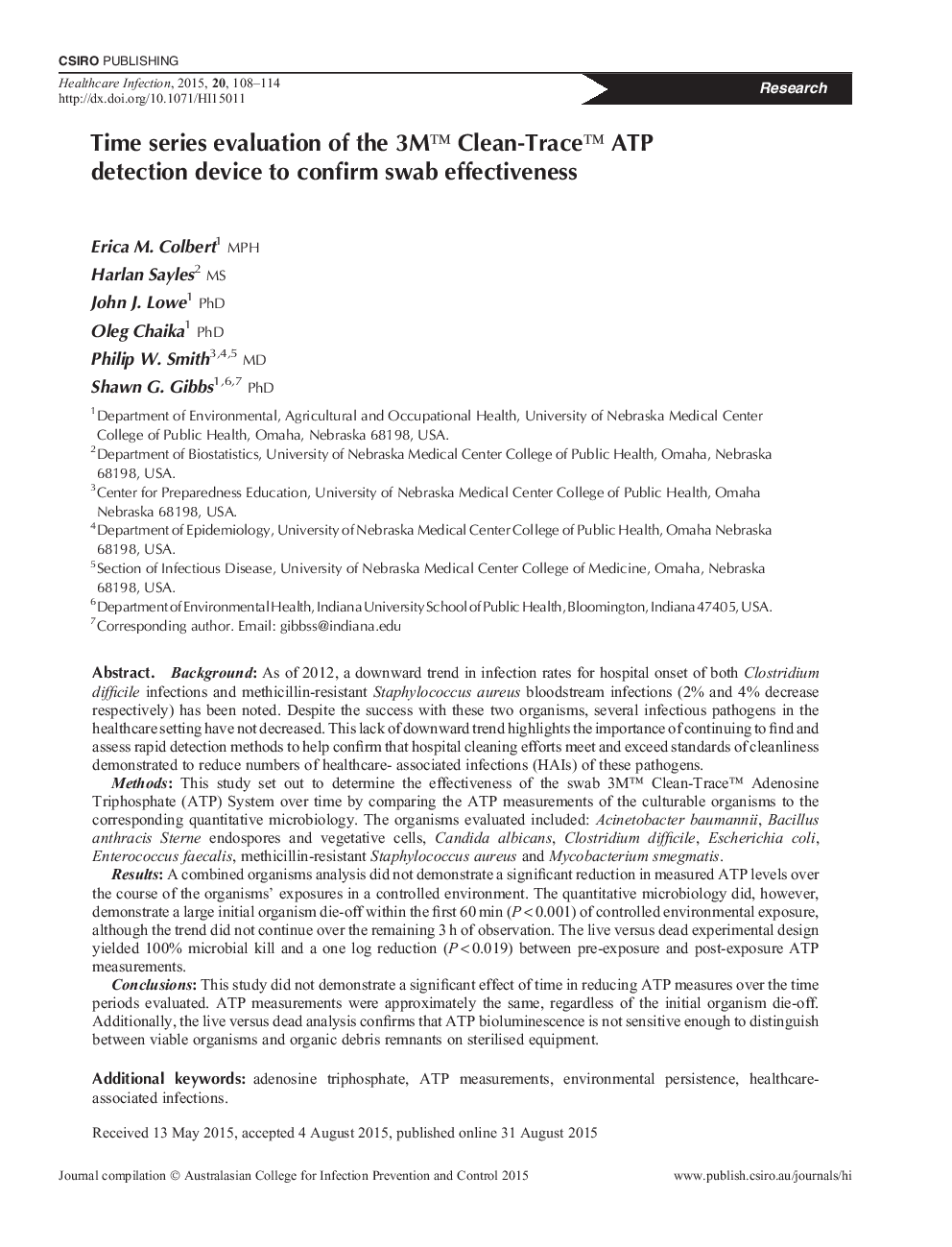| Article ID | Journal | Published Year | Pages | File Type |
|---|---|---|---|---|
| 2679523 | Healthcare infection | 2015 | 7 Pages |
BackgroundAs of 2012, a downward trend in infection rates for hospital onset of both Clostridium difficile infections and methicillin-resistant Staphylococcus aureus bloodstream infections (2% and 4% decrease respectively) has been noted. Despite the success with these two organisms, several infectious pathogens in the healthcare setting have not decreased. This lack of downward trend highlights the importance of continuing to find and assess rapid detection methods to help confirm that hospital cleaning efforts meet and exceed standards of cleanliness demonstrated to reduce numbers of healthcare- associated infections (HAIs) of these pathogens.MethodsThis study set out to determine the effectiveness of the swab 3M™ Clean-Trace™ Adenosine Triphosphate (ATP) System over time by comparing the ATP measurements of the culturable organisms to the corresponding quantitative microbiology. The organisms evaluated included: Acinetobacter baumannii, Bacillus anthracis Sterne endospores and vegetative cells, Candida albicans, Clostridium difficile, Escherichia coli, Enterococcus faecalis, methicillin-resistant Staphylococcus aureus and Mycobacterium smegmatis.ResultsA combined organisms analysis did not demonstrate a significant reduction in measured ATP levels over the course of the organisms’ exposures in a controlled environment. The quantitative microbiology did, however, demonstrate a large initial organism die-off within the first 60 min (P < 0.001) of controlled environmental exposure, although the trend did not continue over the remaining 3 h of observation. The live versus dead experimental design yielded 100% microbial kill and a one log reduction (P < 0.019) between pre-exposure and post-exposure ATP measurements.ConclusionsThis study did not demonstrate a significant effect of time in reducing ATP measures over the time periods evaluated. ATP measurements were approximately the same, regardless of the initial organism die-off. Additionally, the live versus dead analysis confirms that ATP bioluminescence is not sensitive enough to distinguish between viable organisms and organic debris remnants on sterilised equipment.
